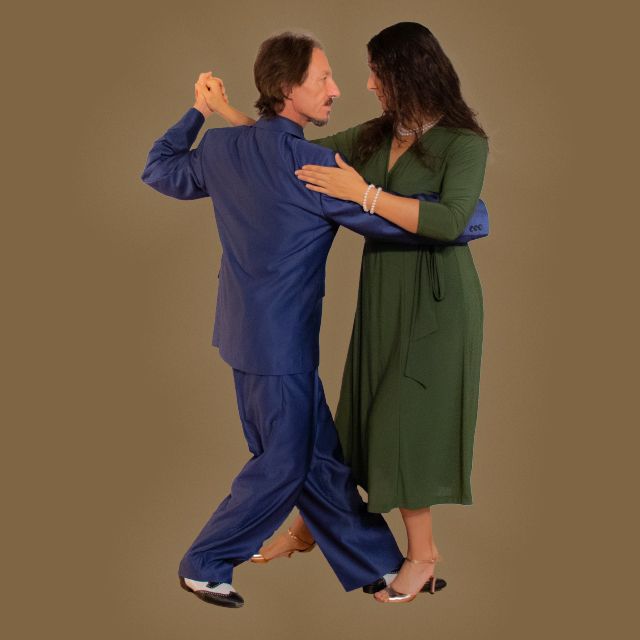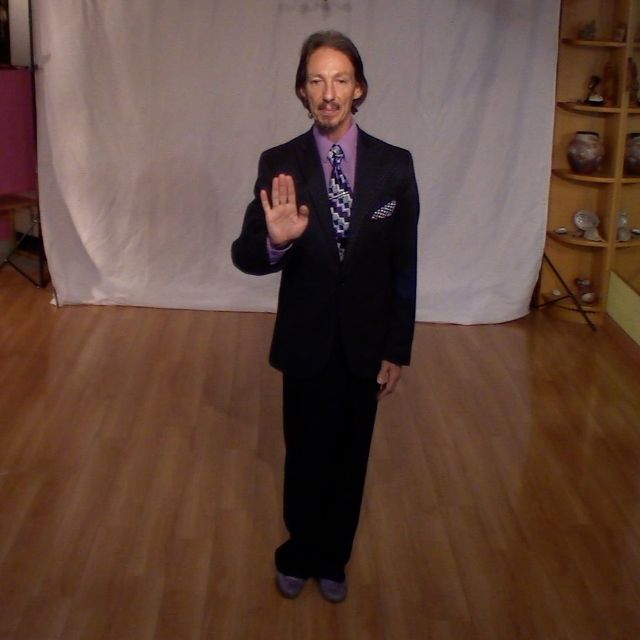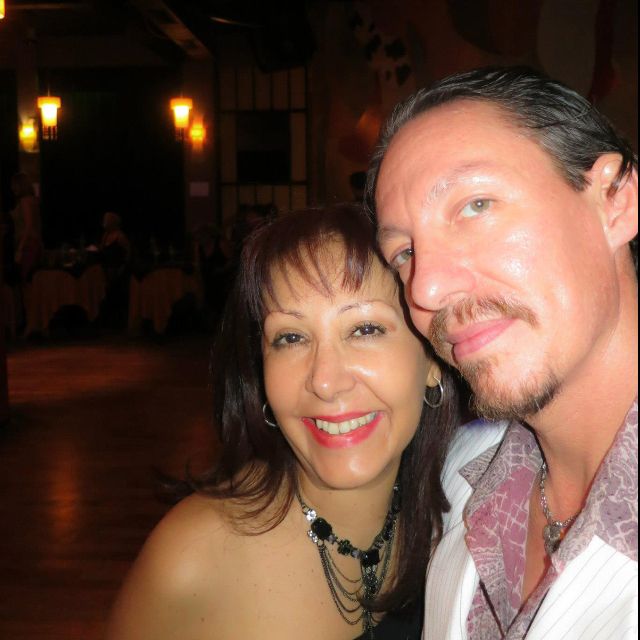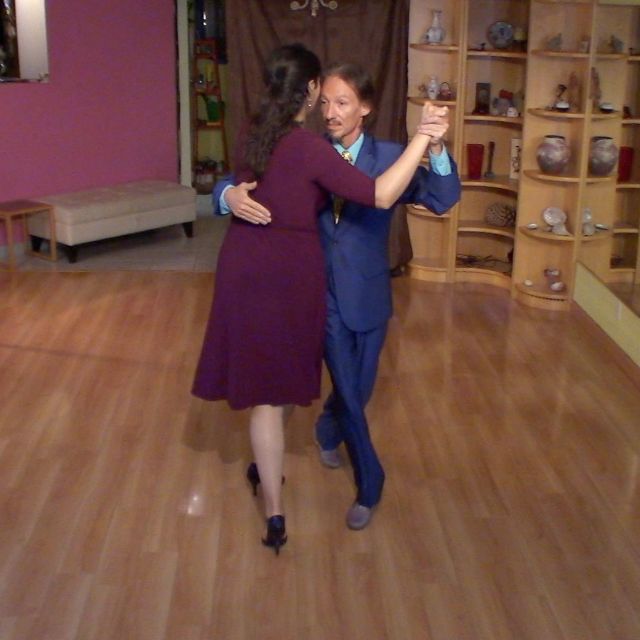Argentine Tango class on walking: fundamentals
Tango challenges you to make your walk -and your entire life- a work of Art.
- Let’s begin walking slow. We will count four beats, and in each beat “one” of these four-counts, we will take a step. Change of weight. Same thing going back. Again changing weight. One more time…
2. Now let’s walk at regular speed. It will be every two beats. If I count four I will be stepping in beats one and three but to simplify I will count two beats. Change weight, and again: one, two, one… For this pace, I normally use the word “Tango”…
3. Another rhythmic pace for your walk is the “corrida”. We can use the expression “quick-quick-slow”, or “down-up-down, or we can say one-and-two. Start with your left going forward, and with your right going backward. Then start with your other leg. Try one more time…
4. We can also walk slower than in four counts. Let’s try using these four speeds of walking.
5. On the line of dance, we will practice walking in front and outside’s partner and use these four speeds: slow, regular speed, fast (that is quick-quick-slow), and the very slow speed of walking.
6. Another possibility of walking in Tango is the crossed system. The crossed system is essentially a backward ocho. We will exit the crossed system walk with a salida cruzada.
7. Now we can add the corrida. It will be in front of your partner, and you must start it with the leader’s left foot, the follower’s right foot. Do not start right away with a corrida. Make two steps before.
8. Our next walk is to walk on the closed side of the embrace. We need to do it in the crossed system. We can start with a backward ocho. In the second half backward ocho, I place myself on the right side of the couple. If we walk in the direction of the line of dance, the follower will be position on the inside of the dance floor. Let’s try combining it with the other elements too.
9. A good way to exit the crossed system walking on the closed side of the embrace is to do a sacada before the backward ocho.
10. When walking on the closed side of the embrace, a difficulty could be that your partner gets too much in front of you and you cannot walk. In order to avoid that we will place our partner on our left side.
11. From the sacada to backward ocho, we can continue into a clockwise direction turn.
12. The main difficulty in this element appears after the leader does back-side-forward, when the follower is in the forward step position too. The following movement requires a lot of pivot. In order to make this pivot effortlessly, face the follower with your torso. The resulting torsion will work as a spring or rubber band, helping you to make the pivot and the sacada.
13. Let’s recap all the ideas we have been working on in this class: walking in front of your partner, walking outside partner at a slow pace, crossed system walking, backward ocho, salida cruzada, crossed system walking on the closed side of the embrace, sacada, clockwise direction turn, and corrida.
See more video lessons:
Dancing Argentine Tango presents itself as a way for you to organize your life towards empowering yourself, helping you to achieve your life’s goals, and even provide you with such goals:
To make life beautiful.
Learn to dance Argentine Tango in the San Francisco Bay Area:





